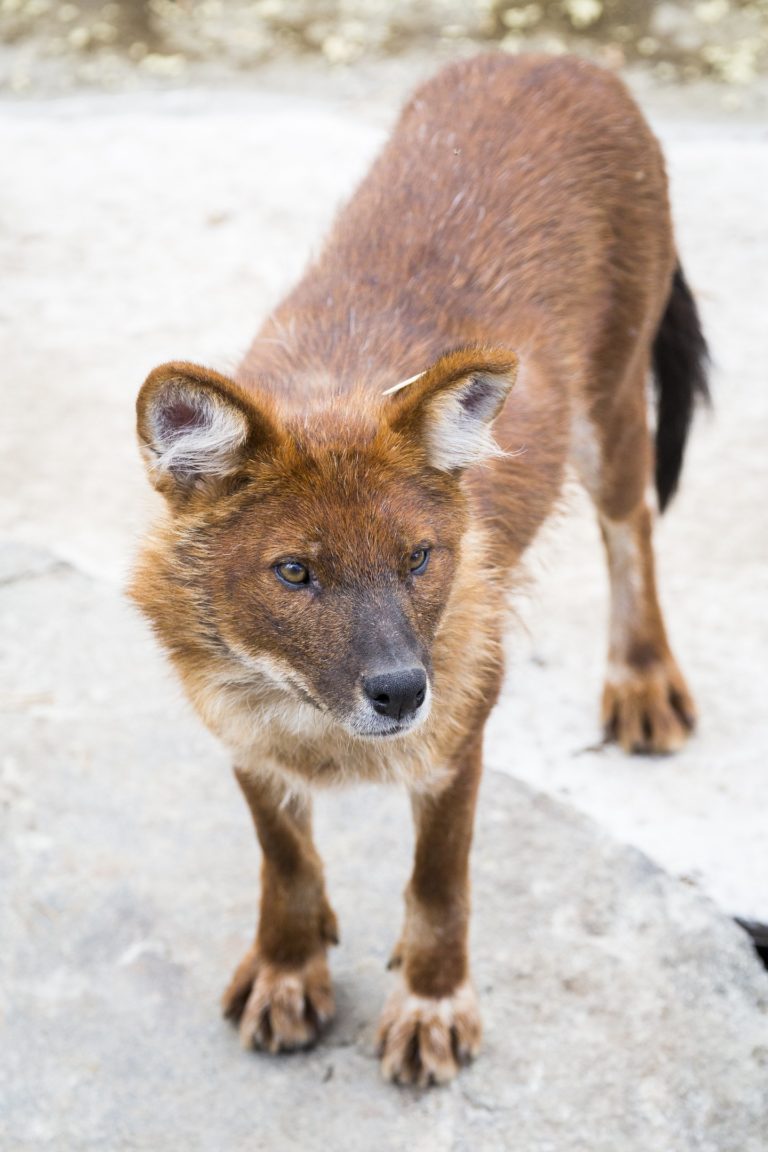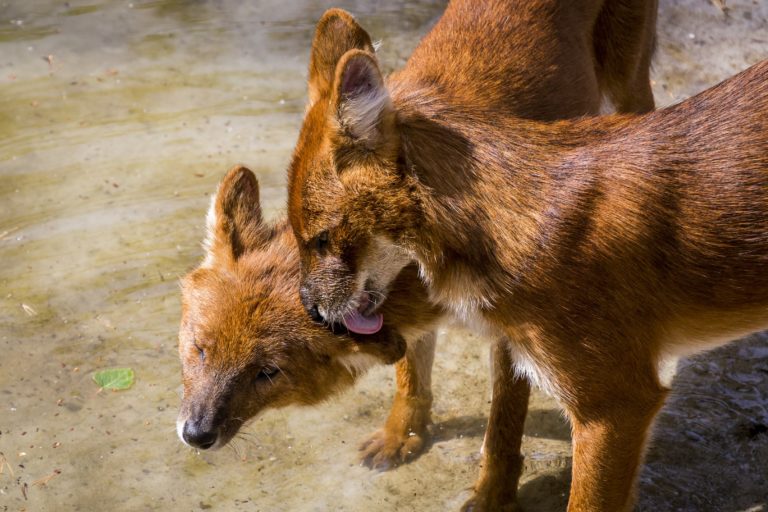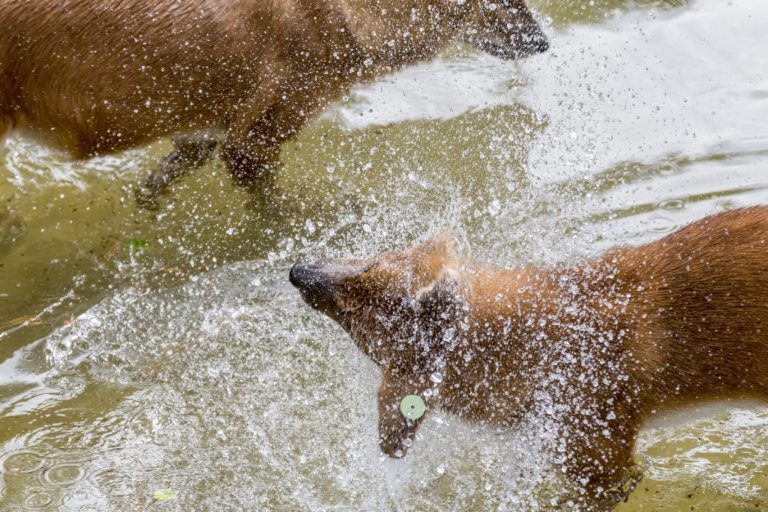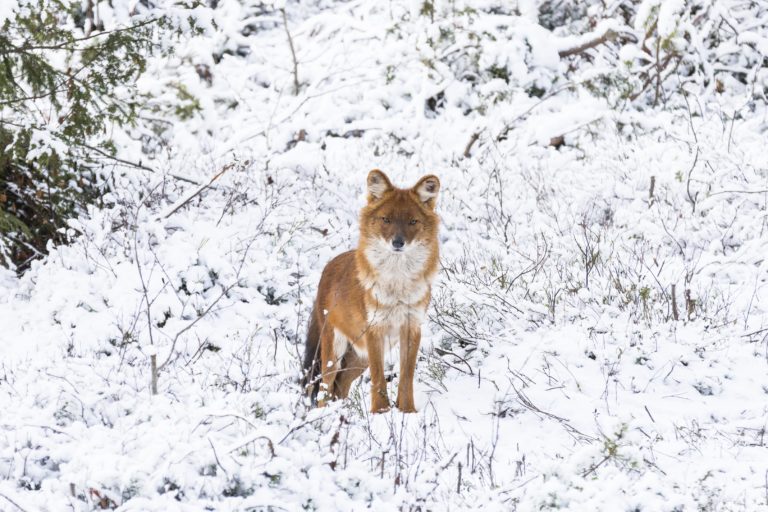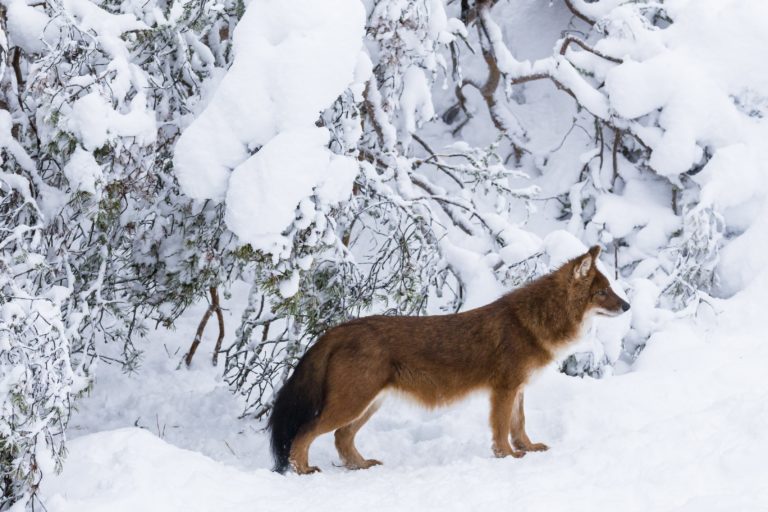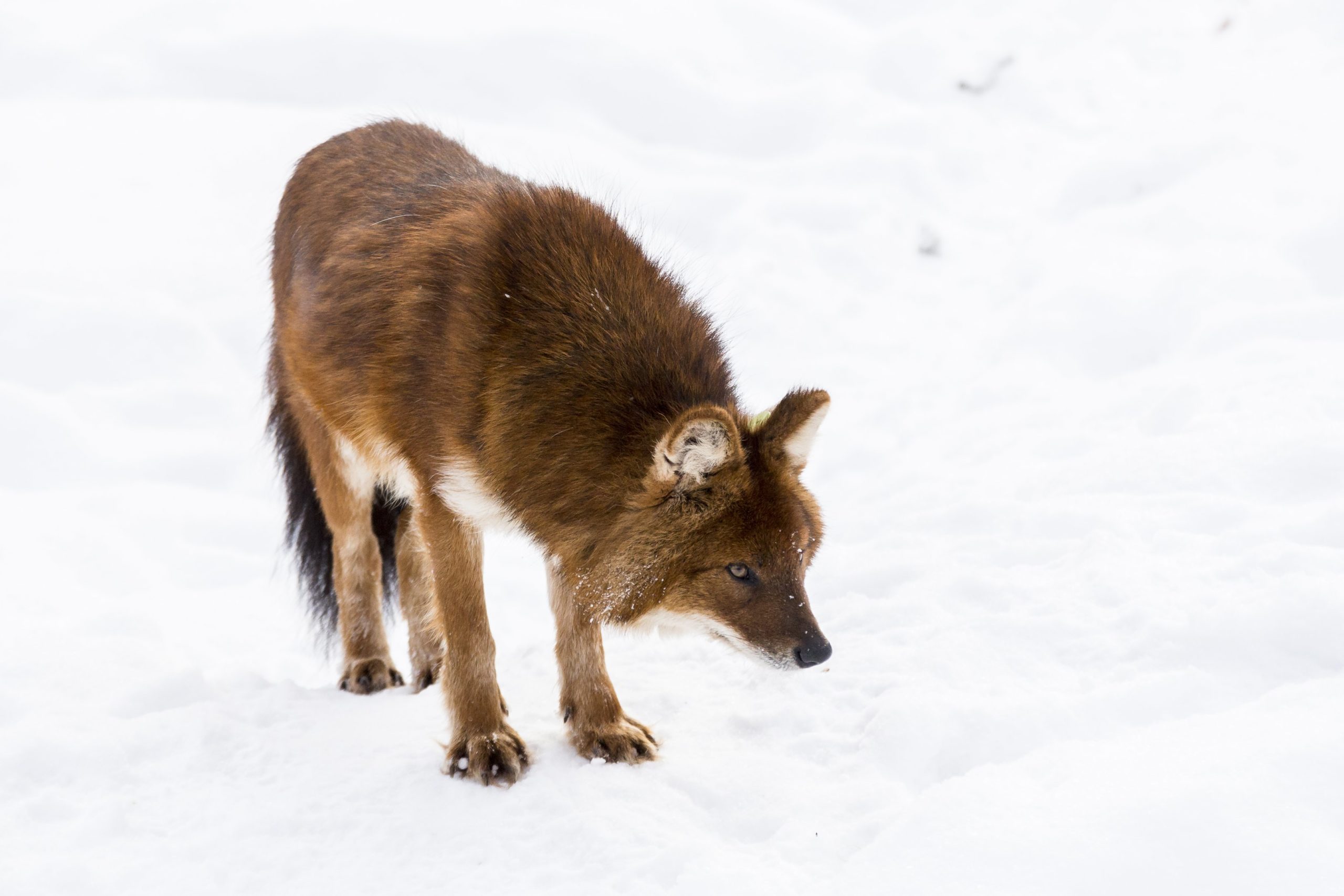
Dhole
LIVING HABITS
Dholes are highly sociable animals living in clans of 5-12 individuals. Usually only one of the female breeds and the rest of the pack participate in nursing the cubs. The scientific name, Cuon alpinus, refers to mountainous areas, rendering the dholes their appropriate name as they are excellent climbers. Some dholes may climb up to a tree too. Dholes are prey animals feeding on meat, but they may eat also berries, insects and fruit. Dholes breed in all sorts of environments from mountainous desert areas to forests, savannahs and rainforests. The previous habitat region reached from India through Mongolia to South Siberia, but nowadays the distribution is far more dispersed. The species has at least two subspecies; the southern and the northern species.
PROTECTION
The dhole population is listed as critically endangered; the estimate of adult dholes is only 2500. One of the threats for dholes is caused by human actions, destroying the natural habitat of the dholes, and persecution. Poaching has caused the decline in prey animals, restricting the food supply for dholes. Wild dogs spreading diseases are a threat for dholes also. Persecution and illegal killing of dholes still occur in varying degrees of intensity according to region, even though the dhole population is a protected species worldwide.
ADAPTING TO WINTER
Dholes living in the North and on the mountainous regions have a thick winter fur, protecting them well from the cold.
THE DHOLES AT RANUA WILDLIFE PARK
The dholes at the Ranua Wildlife Park are part of the European Endangered Species Program (EEP).
Dhole
Cuon alpinus
Class: Mammalia – Mammals
Order: Carnivora- Carnivores
Family: Canidae – Canines
Size: Weight: 17kg, stands at 50cm at the withers.
Breeding: Heat: September-March, gestation period: 60-62 days and nights. Offspring: 2-6, even 10 at a time. Some of the dhole cubs leave the birth pack at the age of 1 year, some stay with the pack. Sexual maturity reached in 12 months.
Lifespan: Max 14-16 years.

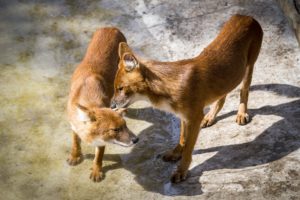
Did you know…
Did you know, that one of the peculiarities of the dholes is the sounds they make which are unlike any of the other dog species? They neither bark nor howl, but produce a variety of sounds for various purposes.





